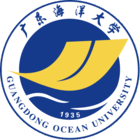详细信息
文献类型:期刊文献
中文题名:流沙湾冬、春季大型海藻的微量元素分析
英文题名:TRACE ELEMENTS OF SPRING AND WINTER MACROALGAE IN LIUSHA BAY
作者:张才学[1];白富进[1];孙省利[1];陈春亮[1]
机构:[1]广东海洋大学海洋资源与环境监测中心,湛江524088
年份:2010
卷号:41
期号:1
起止页码:154
中文期刊名:海洋与湖沼
外文期刊名:Oceanologia Et Limnologia Sinica
收录:CSTPCD、、Scopus、CSCD2011_2012、北大核心2008、北大核心、CSCD
基金:广东省自主创新重大科技专项;2007A032600004号
语种:中文
中文关键词:流沙湾;大型海藻;重金属;富集;生态修复
外文关键词:Liusha Bay, Macro-algae, Heavy metals, Accumulation, Eco-remediation
中文摘要:采用微波消解法和AFA、ICP-MS对流沙湾2008年冬春季21种大型海藻的微量元素进行了分析。结果表明,As、Cu、Pb、Cr、Se、Fe、Mn在细江蓠体内含量最高,分别为8.90、34.35、24.26、68.12、12.04、26777.20、400.16mg/kg;Hg在海蕴体内含量最高,达6.90mg/kg;Zn在鼠尾藻体内含量最高,为277.37mg/kg;Cd在石花菜体内含量最高,为6.77mg/kg;Ba在海门冬体内含量最高,为127.02mg/kg。各藻类对各重金属元素的综合富集能力由强到弱依次为细江蓠>拟刚毛藻>水云>海蕴>鼠尾藻>海门冬>条浒苔>小珊瑚>肠浒苔>蜈蚣藻>礁膜>大石花菜>石花菜>半盐生单歧藻>团扇藻>长石莼>宽扁叉节藻>穗状鱼浒苔>喇叭菜>海头红>刚毛藻,显示出藻类对各重金属元素综合富集能力因藻而异。各元素被藻类富集的量从大到小依次为Fe>Mn>Ba>Zn>Cr>Cu>Pb>As>Se>Cd>Hg,显示出藻类对营养元素的富集要大于对毒性元素的富集。各藻类对各重金属的富集系数从几倍至几十万倍不等,最高是细江蓠对Fe的富集,其次为海蕴对Hg的富集,最差为刚毛藻对Se的富集,其富集系数分别为204875.29、13800.00、3.48。聚类分析结果显示细江篱的富集能力最强,是多种重金属污染海域修复的首选生态环境材料。但对重金属复合污染海域进行生物修复,应有针对性地选择数种富集能力较强的大型海藻组成修复生物群落。
外文摘要:Concentrations of As, Se, Cu, Pb, Zn, Cd, Cr, Fe, Mn, and Ba in 21 macro-algae from Liusha Bay (the west of Xuwen Country, Guangdong Province) in spring and winter 2008 were determined by Atomic Fluorescence Analyzer (AFA) and Inductively Coupled Plasma Mass Spectrometer (ICP-MS). The results show that the concentration of heavy metal was enriched in different algae. For example, Gracilaria conferuoides had the highest concentration of As, Cu, Pb, Cr, Se, Fe, Mn, at 8.9, 34.35, 24.26, 68.12, 12.04, 26777.2, and 400.16mg/kg; and Nemacysti Decipientis, Sargassum thunbergii, Gelidium amansii, Asparagopsis taxiformis for Hg, Zn, Cd, Ba at 6.9, 277.37, 6.77, 127.02mg/kg, respectively. The order of heavy-metal bioaccumulation degree is: Gracilaria conferuoides 〉 Cladophoropsis herpestica 〉 Ectocarpus 〉 Nemacysti Decipientis 〉 Sargassum thunbergii 〉 Asparagopsis taxiformis 〉 Enteromorpha clathrata 〉 Corallina pilulifera 〉 Enteromopha intestinalis 〉 Grateloupia filicina 〉 Monostroma nitidum 〉 Gelidium pacifieum Okam. 〉 Gelidium amansii 〉 Padina sp. 〉 Ulva stenophylla 〉 Amphiroa anceps Lamouroux 〉 Acanthophora spicifera 〉 Turbinaria ornata 〉 Plocamium telfairiae 〉 Cladophora sp.. Moreover, the magnitude order of average concentration of heavy metals accumulated in different algae is: Fe 〉 Mn 〉 Ba 〉 Zn 〉 Cr 〉 Cu 〉 Pb 〉 As 〉 Se 〉 Cd 〉 Hg, and the bio-enrichiable nutrients elements are richer in the algae than toxic elements. Different algae are very different in the bioaccumulation coefficient varying from several to hundreds of thousands of times, and so for each species for different heavy metals. The highest value was found in Gracilaria conferuoides for Fe enrichment with bioaccumulation coefficient at 204875.29, followed by Nemacysti decipientis for Hg at 13800.00; and the least one was Cladophora sp. for Se at only 3.48. No individual alga had strong accumulation of every heavy metal. Cluster analysis showed that Gracilaria conferuoides was the strongest one capable of bio-accumulation, and can be selected to treat heavy-metal polluted waters. However, to remedy large-area heavy-metal contaminated waters, combination of several capable algae is recommended for better ecological restoration.
参考文献:
![]() 正在载入数据...
正在载入数据...


